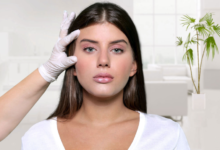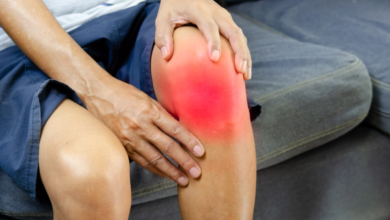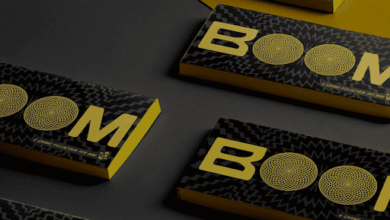What causes sleep apnea

Understanding Obstructive Sleep Apnea
So, what exactly is obstructive sleep apnea, or OSA? It’s a pretty common sleep disorder where your breathing repeatedly stops and starts throughout the night. This isn’t just about snoring loudly, though that’s often a big clue. It’s about your airway actually getting blocked, usually when the soft tissues in the back of your throat relax too much. This blockage causes you to briefly stop breathing, sometimes dozens of times an hour. When this happens, your brain gets a signal that you’re not getting enough oxygen, and it jolts you awake – often so quickly you don’t even remember it. This cycle can really mess with your sleep quality, leaving you tired even after a full night in bed.
What Happens During An Apnea Event
During an apnea event, your breathing muscles work harder, but no air moves in or out of your lungs. This is because the airway is physically obstructed. The episode continues until your brain signals a brief arousal, causing you to gasp or snort, which opens the airway. This process repeats throughout the night. It’s a pretty disruptive pattern for your body’s natural sleep cycles.
The Role Of Airway Collapse
The main culprit in obstructive sleep apnea is the collapse of the upper airway. Think of it like a floppy tube that gets squashed shut when you relax during sleep. This collapse can be caused by a variety of factors, including the tongue falling back into the throat or the soft palate and uvula drooping. When these structures block the passage of air, you can’t breathe properly.
Common Symptoms To Recognize
Recognizing the signs of sleep apnea is the first step. Loud, frequent snoring is a big one, especially if it’s interrupted by pauses in breathing. You might also experience gasping or choking during sleep, excessive daytime sleepiness, morning headaches, and difficulty concentrating. Some people also report dry mouth or a sore throat upon waking. If you or someone you know experiences these, it might be worth looking into, perhaps even considering options like oral device therapy in Poway if diagnosed.
Factors Contributing To Airway Obstruction
When we talk about what causes airway obstruction in sleep apnea, a few big factors come to mind. It’s not just one thing, but a combination of things that can make your airway more likely to close up while you’re sleeping.
Excess Body Weight and Sleep Apnea
This is a really common one. Carrying extra weight, especially around the neck and abdomen, can put pressure on your airway. Think of it like a pillow pressing down on a hose – it makes it harder for air to get through. The fatty tissue can build up in the throat and around the tongue, narrowing the space where air needs to flow. For people dealing with sleep apnea in Poway, managing weight can often make a big difference. It’s not always easy, but even a modest weight loss can help reduce the severity of the condition.
Anatomical Variations in the Airway
Sometimes, it’s just how you’re built. Some people naturally have narrower airways, or their jaw might be set back a bit, which can make the tongue fall back more easily during sleep. Things like a large tongue, enlarged tonsils or adenoids, or even a deviated septum can also play a role. These physical traits mean there’s less room for air to pass, increasing the risk of collapse. If you’ve tried other treatments and they haven’t worked, looking into options like oral device therapy in Poway might be a good next step, as these devices can help reposition the jaw and tongue.
Age and Gender Predispositions
As we get older, our muscles, including those in the throat, tend to lose some tone. This can make them more likely to collapse during sleep. So, age is definitely a factor. And while men are more commonly diagnosed with sleep apnea, women can develop it too, especially after menopause when hormonal changes can affect muscle tone and fat distribution. It’s important for everyone to be aware of the symptoms, regardless of age or gender.
Lifestyle Choices Impacting Sleep Quality
When we talk about sleep apnea, it’s easy to focus on the physical stuff, like anatomy or weight. But what we do in our daily lives plays a pretty big role too. Think about it – the things you consume or how you position yourself at night can really mess with your breathing. It’s not just about what’s going on inside your body; it’s also about the choices you make.
Alcohol and Sedative Effects
Drinking alcohol, especially close to bedtime, can make sleep apnea symptoms worse. Alcohol relaxes the muscles in your throat, and that’s exactly where the problem lies with obstructive sleep apnea. When these muscles relax too much, they’re more likely to collapse and block your airway. Sedatives, like certain prescription medications for anxiety or insomnia, can have a similar effect. They depress your central nervous system, which can slow down your breathing and make airway collapse more probable. So, if you’re struggling with sleep apnea, it’s a good idea to talk to your doctor about how alcohol and certain medications might be affecting your sleep quality.
Smoking’s Detrimental Influence
Smoking is bad for pretty much everything, and your sleep quality is no exception. The chemicals in cigarette smoke can cause inflammation and irritation in your airways. This swelling can narrow your throat, making it easier for it to collapse during sleep. Plus, smoking can disrupt the normal sleep cycle, leading to more fragmented and less restful sleep overall. Quitting smoking is one of the best things you can do for your health, and it can also make a noticeable difference in your sleep apnea symptoms.
Sleep Position and Its Significance
Where you sleep can actually matter quite a bit. Sleeping on your back, for instance, can make sleep apnea worse for some people. When you lie on your back, gravity can pull your tongue and soft tissues in your throat towards the back of your airway, increasing the chance of a blockage. Many people find that sleeping on their side helps keep their airway more open. Some even use special pillows or devices to help them stay in a side-sleeping position throughout the night. If you’re dealing with sleep apnea, experimenting with different sleep positions might offer some relief. For those in the Poway area looking for solutions, exploring options like oral device therapy in Poway can be a great step, as these devices often work best when combined with lifestyle adjustments like changing your sleep position.
Underlying Medical Conditions Associated With Sleep Apnea
Sometimes, sleep apnea isn’t just about airway collapse; it can be linked to other health issues going on in your body. It’s like a domino effect, where one problem can trigger or worsen another. Understanding these connections is key to getting the right help.
Cardiovascular Health and Sleep Apnea
There’s a pretty strong link between sleep apnea and heart problems. When your breathing stops and starts all night, it puts a lot of stress on your heart. This can lead to high blood pressure, and if you already have heart issues, it can make them worse. It’s not uncommon for people with sleep apnea to also have conditions like atrial fibrillation or heart failure. Managing sleep apnea can actually help improve your heart health.
Neurological Disorders and Breathing
Certain conditions that affect the brain and nerves can also mess with your breathing during sleep. Think about things like stroke or Lou Gehrig’s disease (ALS). These can damage the parts of your brain that control the muscles needed for breathing, making it harder to keep your airway open. This can lead to a type of sleep apnea called central sleep apnea, where the brain just doesn’t send the right signals to the muscles that control breathing.
Hormonal Imbalances and Sleep
Hormones play a big role in how our bodies work, including sleep and breathing. For example, conditions like hypothyroidism, where your thyroid gland isn’t making enough hormones, can sometimes contribute to sleep apnea. It can cause swelling in the throat area, making the airway narrower. Polycystic ovary syndrome (PCOS) is another one that’s been linked, possibly due to hormonal changes and weight gain that often comes with it. If you’re in the Poway area and dealing with these issues, talking to your doctor about sleep apnea and potential treatments like oral device therapy in Poway might be a good idea.
Exploring Treatment Options For Sleep Apnea
When dealing with sleep apnea, especially if you’re in the Poway area, there are several ways to tackle it. It’s not just one-size-fits-all, and what works for one person might not be the best for another. The main goal is always to keep your airway open while you sleep, preventing those disruptive pauses in breathing.
Continuous Positive Airway Pressure (CPAP)
CPAP is often the first line of defense recommended by doctors. It involves a machine that delivers a steady stream of air through a mask you wear at night. This constant pressure acts like an air splint, keeping your throat from collapsing. It’s pretty effective for many people, but some find the mask uncomfortable or the noise bothersome.
Surgical Interventions For Airway Issues
For some individuals, surgery might be an option. This can involve different procedures depending on the specific cause of the airway obstruction. Things like removing excess tissue from the back of the throat, repositioning the jaw, or even implanting a device to stimulate a nerve that controls tongue movement are possibilities. Surgery isn’t for everyone, though, and it comes with its own set of risks and recovery times.
Considering Oral Device Therapy In Poway
Another popular and often very effective approach, particularly for mild to moderate sleep apnea, is oral device therapy. This is where custom-made mouthpieces come into play. They work by repositioning your jaw or tongue to keep the airway clear. Many people find these devices much more comfortable and convenient than CPAP. If you’re looking into sleep apnea in Poway, talking to a dentist who specializes in oral device therapy is a great next step. They can assess your specific needs and see if this treatment is right for you.
The Benefits Of Oral Appliance Therapy
Oral appliance therapy is a fantastic option for many people dealing with sleep apnea, especially if you’re looking for an alternative to CPAP machines. These devices are custom-made to fit your mouth and work by repositioning your jaw or tongue to keep your airway open while you sleep. They’re often much more comfortable and easier to travel with than CPAP machines.
How Oral Devices Improve Airflow
Oral appliances are designed to prevent the soft tissues in your throat from collapsing into your airway. Think of it like this: during sleep, your jaw and tongue muscles relax. For some people, this relaxation can cause these tissues to block the airway, leading to those pauses in breathing characteristic of sleep apnea. Oral devices, typically mandibular advancement devices (MADs) or tongue-retaining devices (TRDs), gently hold your lower jaw slightly forward or keep your tongue in place. This simple repositioning creates more space in the back of your throat, allowing air to flow freely and preventing those disruptive apnea events. It’s a pretty clever way to tackle the problem without needing a mask and hose.
Comfort and Convenience Compared to CPAP
Let’s be honest, CPAP machines can be a hassle. The mask, the tubing, the noise – it’s a lot to manage, and many people find them uncomfortable or difficult to get used to. Oral appliances, on the other hand, are much more discreet and user-friendly. They look a bit like a mouthguard or a dental retainer, and once you get used to wearing one, you often forget it’s even there. Plus, they don’t require electricity, so they’re perfect for travel. No more worrying about finding an outlet or carrying bulky equipment. For many, this increased comfort and ease of use make a huge difference in their willingness to stick with treatment, which is key for managing sleep apnea effectively. If you’re in the area, exploring oral device therapy in Poway could be a great step.
Effectiveness of Oral Device Therapy in Poway
Oral appliance therapy has been shown to be highly effective for many individuals with mild to moderate obstructive sleep apnea. Studies consistently show that these devices can significantly reduce the number of breathing interruptions during sleep, leading to better sleep quality and reduced daytime sleepiness. For those who find CPAP difficult to tolerate or have specific anatomical issues that make CPAP less effective, oral devices can be a game-changer. Many patients in Poway have found great success with this treatment. When considering your options for sleep apnea in Poway, consulting with a dentist experienced in oral appliance therapy is a smart move. They can assess your specific needs and help you find the right device to improve your sleep and overall health.
Wrapping Up: What’s Next?
So, we’ve talked about what can lead to sleep apnea. It’s not just one thing, really. Things like your weight, the shape of your airway, and even just getting older can play a part. It can be a bit overwhelming to think about, but knowing the causes is the first step. If you think you might have sleep apnea, or if you’re just not sleeping well, it’s a good idea to chat with your doctor. They can help figure out what’s going on and what you can do about it. Getting a good night’s sleep makes a big difference in how you feel every day, so it’s worth looking into.







